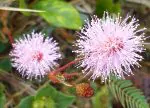This post contains affiliate links. If you buy something from one of our links we may earn a commission. Thanks

Discover the fascinating world of air plants as we answer the question, “Do air plants bloom?” Dive into their blooming habits and how to encourage vibrant blooms!
Air plants do bloom, typically once in their lifetime. The bloom can last from days to months, depending on the species. During the blooming phase, air plants often produce vibrant flowers and may even change color. After blooming, the plant will start to produce offsets, or “pups,” as a form of reproduction.
Have you ever found yourself pondering the question, “Do air plants bloom?” Well, you’re in for a treat!
These unique, low-maintenance plants have a secret to share – they do indeed bloom, and their air plant flowers are as captivating as the plants themselves.
In this post, we’ll dive into the world of air plant blooms, uncovering their colorful secrets and exploring how to keep these little beauties thriving and showing off their vibrant colors.
So, let’s get started on this blooming adventure!
Do Air Plants Bloom? Unveiling the Mystery of Air Plant Blooms

Welcome, fellow plant enthusiasts! If you’re as captivated by air plants as we are, you’re going to love this journey into their enchanting world.
In this introduction, we’ll give you a glimpse of the marvelous Tillandsia species, address some common misconceptions about their blooms, and highlight the importance of flowering in their new growth and reproduction.
So, sit back, relax, and let’s dive into the delightful realm of air plants and their blooming mysteries together!
A Peek into the World of Air Plants (Tillandsia)
 The Tillandsia genus comprises approximately 650 distinct species of evergreen, perennial blossoms belonging to the Bromeliaceae family.
The Tillandsia genus comprises approximately 650 distinct species of evergreen, perennial blossoms belonging to the Bromeliaceae family.
These varieties of air plants are indigenous to various habitats, such as forests, mountain ranges, and deserts, spanning from northern Mexico and the southeastern United States to Mesoamerica, the Caribbean, and South America as far as central Argentina.
Sporting a somewhat silvery hue, their foliage is coated with unique cells known as trichomes that enable the rapid absorption of water that collects on their surface.
Tillandsia ionantha is one of the most popular and eye-catching air plant species earning the nickname Sky plant.
Did you know Spanish moss (Tillandsia usneoides) is an air plant?
Most air plants prefer tropical climates and high humidity but some tillandsia varieties actually grow in drier climates and these are called xeric air plants.
Air plants, also known as Tillandsia, are a group of more than 600 species belonging to the Bromeliad family.
These intriguing plants are unique because they don’t require soil to grow; instead, they absorb moisture and nutrients through their leaves.
With their charming appearance and easy-care nature, air plants have become a favorite among plant enthusiasts and interior decorators alike.
Debunking Myths: Common Misconceptions about Air Plant Blooms
When it comes to air plant blooms, there are quite a few myths floating around.
Some people mistakenly believe that air plants don’t bloom at all, while others think that they only bloom once before dying.
In reality, air plants do bloom, producing stunning flowers that can vary in color, shape, and size depending on the species.
And while some species are monocarpic, meaning they die after flowering, others can produce offsets that continue to grow and bloom.
The Blooming Significance: Air Plant Growth and Reproduction
Flowering plays a crucial role in the life cycle of air plants.
Blooms serve as the starting point for their reproduction, with pollination leading to the production of seeds.
New air plants often develop offsets, or pups, which are baby plants that grow from the base of the mother plant.
These pups eventually mature and bloom themselves, allowing the plant’s lineage to continue.
By understanding and appreciating the importance of air plant blooms, we can better care for these captivating plants and enjoy their beauty for years to come.
Do air plants bloom?
Now that we’ve covered the basics, let’s delve into the heart of the matter: Do air plants bloom?
In this section, we’ll explore the fascinating blooming process of these delightful plants, and take a closer look at the dazzling variety of flowers produced by different air plant species.
So, buckle up, botanical buddies! We’re about to embark on an eye-opening journey into the colorful world of air plant blooms.
Blossoming Beauties: The Blooming Process of Air Plants
The blooming process in air plants is truly a sight to behold.
It all begins with the emergence of an inflorescence, a specialized flower structure that grows from the center of the plant.
As the inflorescence develops, it reveals a stunning array of bracts, brightly colored, leaf-like structures that serve to attract pollinators.
Over time, the flowers emerge from these bracts, displaying a captivating combination of colors, shapes, and sizes.
Air plant blooms can last anywhere from a few days to several months, depending on the species and environmental conditions.
A World of Wonders: Various Air Plant Species and Their Unique Blooms
With over 600 species of air plants, there’s no shortage of diversity when it comes to their blooms.
Each species boasts its own unique flower characteristics, making every bloom a spectacular experience.
For example, Tillandsia ionantha produces a vibrant red or pink inflorescence with purple tubular flowers, while Tillandsia xerographica boasts a striking, curly-bracted inflorescence with delicate, yellow-green flowers.
Other species like Tillandsia cyanea feature a bold, pink paddle-shaped inflorescence with small violet flowers.
By exploring the wide range of air plant species and their distinct blooms, you can bring a touch of nature’s artistry into your home or garden.
How often do air plants bloom?
You might be wondering just how often these charming air plants grace us with their captivating blooms.
In this section, we’ll delve into the factors that influence the frequency of air plant blooming, from genetics to environmental conditions.
So, let’s unravel the mystery of air plant bloom frequency and learn how to maximize these awe-inspiring floral displays in our own homes and gardens.
A Delicate Balance: Factors Affecting Air Plant Bloom Frequency
The frequency at which air plants bloom depends on a delicate interplay of factors, including the plant’s age, overall health, and specific care requirements.
Mature plants are more likely to bloom compared to younger ones, and a healthy plant that receives proper care has a higher chance of producing flowers.
Additionally, factors such as light, temperature, and humidity can also impact bloom frequency, making it crucial to provide optimal growing conditions for your air plants.
Inherited Traits: The Role of Genetics in Bloom Frequency
Genetics plays a significant role in determining the bloom frequency of air plants.
Each species has its own unique blooming pattern, with some species blooming annually, while others may take several years between blooms.
For example, Tillandsia ionantha typically blooms once a year, whereas Tillandsia xerographica might only bloom once every few years.
Understanding the genetic predisposition of your air plant species can help you set realistic expectations for bloom frequency.
The Great Outdoors: Environmental Influences on Bloom Frequency
Environmental factors can significantly impact the blooming habits of air plants.
Factors such as light exposure, temperature, and humidity all play a part in encouraging or discouraging blooms.
For instance, indirect bright light is essential for most air plants to bloom, while extreme temperatures or inadequate humidity can stress the plant and inhibit flowering.
By ensuring that your air plants receive the appropriate amount of light and are kept in suitable temperature and humidity conditions, you can help promote more frequent and vibrant blooms.
When do air plants bloom?
Are you eager to know when your air plants might surprise you with their stunning blooms? We’ve got you covered!
In this section, we’ll explore the blooming period and timing of air plant blooming, unveil the signs that indicate an upcoming bloom, and discuss the impact of the growth cycle on this mesmerizing process.
So, let’s dive in and learn when to expect those breathtaking floral displays from our cherished air plant companions.
Nature’s Calendar: Seasonal Variations in Air Plant Blooming
While air plants can technically bloom at any time of the year, many species have a preferred blooming season.
Some air plants tend to flower during the warmer months, while others may bloom in late winter or early spring.
It’s essential to understand that these seasonal variations may differ depending on the species and their native habitat.
By observing your air plants and noting their preferred blooming seasons, you can anticipate when to expect their dazzling floral displays.
Bloom Watch: Identifying Signs of an Imminent Bloom
Before an air plant bursts into bloom, it often exhibits a few telltale signs that a floral display is on the horizon.
One of the most apparent indicators is a change in leaf color, which can range from deepening hues to vibrant shades of red, pink, or purple.
Additionally, you might notice the plant’s central leaves beginning to spread, making way for the emerging inflorescence.
By keeping an eye on these subtle changes, you can identify when your air plant is gearing up for a spectacular bloom.
Life Stages: The Impact of the Growth Cycle on Blooming
The air plant’s life cycle plays a crucial role in determining when it will bloom.
Air plants generally need to reach maturity before they’re ready to produce flowers.
The time it takes for a plant to mature varies depending on the species, with some plants maturing within a year or two, while others might take several years to reach this stage.
Once an air plant is mature and healthy, it will be more likely to bloom, providing you with a mesmerizing display of color and beauty.
What time of year do air plants bloom?
Curious about the best time of year to witness the captivating blooms of your air plants?
You’re in the right place! In this section, we’ll discuss general timeframes for air plant blooms, delve into the differences in bloom timing across various species, and share some tips for providing optimal conditions to encourage these delightful plants to flower.
So, get ready to dive into the seasonal secrets of air plant blooming and bring the magic of these botanical wonders to life!
Nature’s Rhythm: General Timeframes for Air Plant Blooms
While air plants can bloom at various times throughout the year, many species tend to follow general seasonal patterns.
For instance, some air plants are more likely to bloom during spring and summer months when the days are longer, and there’s an abundance of sunlight.
Others may surprise you with their blooms during the cooler months of late winter or early spring.
It’s essential to remember that these timeframes can vary depending on the species and their natural habitats.
A Diverse Symphony: Differences in Bloom Timing Across Species
With over 600 air plant species, there’s a wide range of bloom timings to consider.
Some species, like Tillandsia ionantha, tend to flower in the warmer months, while others, like Tillandsia stricta, are more likely to bloom during the cooler months.
Researching the specific bloom timing for your air plant species will help you know when to expect those enchanting floral displays and prepare the optimal environment for their growth.
Setting the Stage: Tips for Providing Optimal Conditions for Blooming
To encourage your air plants to bloom, it’s essential to provide the ideal conditions that support their growth and flowering. Here are a few tips to help your air plants thrive:
Light: Ensure your air plants receive bright, indirect sunlight or fluorescent lighting for at least 10-12 hours per day.
Water: Mist your air plants 2-3 times a week or soak them in water once a week.
Make sure to shake off any excess water after soaking allowing them to dry thoroughly afterward.
Avoid using tap water instead used distilled water or rainwater.
Nutrients: Provide a well-balanced air plant fertilizer specifically designed for air plants once a month to support their growth and blooming.
Temperature: Maintain a consistent temperature between 50-90°F (10-32°C), avoiding extreme fluctuations that can stress the plant.
Humidity: Most air plants will appreciate growing in humid environments. Aim for a relative humidity of around 40-60%, using a humidifier or a pebble tray with water if necessary.
By following these tips and adapting them to the specific needs of your air plant species, you’ll be well on your way to enjoying their mesmerizing blooms throughout the year.
Do air plants bloom more than once?
As a fellow air plant enthusiast, you might be wondering if these captivating plants can delight us with their blooms more than once.
In this section, we’ll explore the fascinating world of blooming air plant habits, including the differences between monocarpic and polycarpic species, and the role of pups in the continuation of the air plant lifecycle.
So, let’s unravel the mystery of whether air plants can treat us to multiple blooming experiences or if they’re one-time wonders.
Fleeting Beauty: The Lifespan of an Air Plant Bloom
Air plant blooms, while beautiful, are often short-lived. Depending on the species, the blooms can last anywhere from a few days to a few months.
Once the bloom has faded, the plant will not produce another flower from the same inflorescence.
However, this doesn’t mean the end of the line for air plant blooms, as other aspects of their lifecycle come into play, including the production of offsets or pups at the base of the plant.
Life Goes On: Understanding the Process of Air Plant Offset Production
After an air plant blooms, it typically begins to produce offsets or pups at its base. These new pups will eventually grow into mature air plants that can bloom on their own.
While the parent plant may eventually decline and die after producing pups, these baby air plants continue the lifecycle, ensuring that you can enjoy air plant blooms for years to come.
A Blooming Encore: How to Encourage Multiple Blooms in Air Plants
While individual air plants won’t bloom more than once from the same inflorescence, you can encourage multiple blooms over time by providing the optimal conditions for their growth and pup production.
Here are a few tips to help your air plants produce more blooms:
Maintain ideal light, water, and temperature conditions as discussed in earlier sections.
Fertilize your air plants with a bromeliad or air plant-specific fertilizer to support their growth and blooming.
Monitor the growth of pups and consider separating them from the parent plant once they reach about 1/3 the size of the parent. This will allow the pups to grow and bloom independently.
Rotate your air plant collection, ensuring that each plant gets the right amount of light and care, increasing the chances of more blooms over time.
By following these tips and nurturing the pups produced by your air plants, you can enjoy multiple blooming experiences throughout the years.
Do air plants die after flowering?
As we’ve journeyed through the captivating world of air plant blooms, you might be wondering what happens to these intriguing plants after they’ve put on their stunning floral displays.
In this section, we’ll discuss the fate of air plants after they’ve bloomed, including the process of producing offsets and the eventual decline of the parent plant.
So, let’s dive into the post-bloom life of air plants and learn how their unique lifecycle continues even after their flowers fade away.
A Grand Finale: The Process of Monocarpic Flowering
Most air plants are monocarpic, meaning they flower only once in their lifetime.
After putting on their spectacular bloom, these plants focus their energy on producing offsets or pups.
Although the parent plant won’t bloom again, its role in the lifecycle is far from over, as it ensures the survival and continuation of its species through the growth of its offspring.
Circle of Life: Lifecycle of Air Plants After Flowering
After flowering, air plants enter a new phase in their lifecycle.
The parent plant begins to produce pups at its base, which grow into mature plants capable of blooming on their own.
Eventually, the parent plant may start to decline and die, but not before giving life to a new generation of air plants.
This fascinating process highlights the resilience and adaptability of air plants in their natural habitats.
Nurturing the Next Generation: How to Care for Air Plants After Flowering
Once your air plant has bloomed and started producing pups, it’s essential to provide the proper care to ensure the survival and growth of these baby plants.
Here are some tips for caring for air plants after flowering:
Continue providing optimal light, water, temperature, and humidity conditions to support the growth of both the parent plant and the pups.
Fertilize your air plants with a bromeliad or air plant-specific fertilizer to encourage the healthy development of pups.
Monitor the pups’ growth, and consider separating them from the parent plant once they reach about 1/3 of the parent’s size. This will allow the pups to grow independently and eventually bloom on their own.
Keep an eye on the parent plant as it declines, removing any dead or decaying leaves to maintain the overall health of your air plant collection.
By caring for your air plants after flowering and nurturing their pups, you can enjoy a thriving air plant collection for years to come.
How to get air plants to bloom
So, you’ve fallen in love with air plants and their enchanting blooms, but how do you encourage these botanical beauties to flower in your care?
In this section, we’ll share some expert tips and tricks on how to coax your air plants into displaying their dazzling blooms.
From providing the perfect environment to offering the right nutrients, we’ll guide you through the steps to ensure your air plants flourish and treat you to their breathtaking floral shows.
Building a Strong Foundation: Proper Air Plant Care and Maintenance
Ensuring that your air plants bloom begins with providing proper care and maintenance.
This includes giving them the right amount of light, water, and nutrients, as well as maintaining appropriate temperature and humidity levels.
By building a strong foundation through proper care, you create an environment that promotes healthy growth and increases the likelihood of your air plants producing beautiful blooms.
A Blooming Boost: Enhancing Blooming with Light, Water, and Nutrients
To help coax your air plants into blooming, it’s essential to pay close attention to their specific needs in terms of light, water, and nutrients.
Here are some key tips to enhance blooming potential:
Light: Ensure your air plants receive bright, indirect sunlight or fluorescent lighting for at least 10-12 hours per day.
Water: Mist your air plants 2-3 times a week or soak them in water once a week, allowing them to dry thoroughly afterward.
Nutrients: Provide a well-balanced fertilizer specifically designed for air plants once a month to support their growth and blooming.
By meeting these essential needs, you can create an environment that encourages your air plants to bloom.
Fine-Tuning the Atmosphere: The Role of Temperature and Humidity in Bloom Initiation
Temperature and humidity also play significant roles in encouraging air plants to bloom.
Maintaining the right levels will help your air plants thrive and increase their likelihood of blooming. Here are some guidelines to follow:
Temperature: Aim to keep your air plants in a consistent temperature range of 50-90°F (10-32°C). Avoid extreme fluctuations in temperature, as these can stress your plants and inhibit blooming.
Humidity: Maintain a relative humidity of around 40-60% to provide the ideal environment for air plant growth and blooming.
If necessary, use a humidifier or a pebble tray with water to increase humidity levels in your space.
By fine-tuning the temperature and humidity levels in your air plant’s environment, you’ll be one step closer to enjoying their mesmerizing blooms.
Air Plant Flowers FAQs
Air plants captivate people with their ability to grow without soil and their occasional, vibrant blooms.
These fascinating plants bloom to signal maturity and pave the way for the next generation through offsets, also known as ‘pups.’
Understanding the blooming process and how to care for air plants during this time can enrich the experience of keeping this unique flora.
Let’s delve into some of the most frequently asked questions about the flowering of air plants.
Q: What does it mean when an air plant flowers?
A: When an air plant flowers, it signifies that it has reached maturity. Flowering is a natural process that prepares the plant for reproduction by producing offsets or ‘pups.’
Q: Should I let my air plant flower?
A: Absolutely, allowing your air plant to flower is a good idea as it’s a natural part of the plant’s life cycle. The bloom is an indication that your plant is healthy and mature.
Q: What to do when air plant flowers?
A: Continue with regular care but be extra cautious not to damage the delicate flower.
You can reduce misting to avoid soaking the bloom. It’s also a good idea to isolate flowering air plants if you’re growing different species together, to prevent hybridization.
Q: How long do air plant flowers last?
The duration of an air plant’s bloom really depends on the specific species and individual plant’s health.
For most air plants, the flower may last anywhere from a few days to several weeks. Some species can have flowers that last up to a few months under optimal conditions.
After the bloom period, the plant will usually start producing offsets, commonly known as ‘pups,’ which are essentially baby air plants that grow at the base of the mature plant.
Conclusion
As we wrap up our delightful exploration of air plant blooms, we hope this guide has answered your burning questions and inspired you to nurture these fascinating plants.
Armed with the knowledge and tips shared throughout this journey, you’re now well-equipped to provide the ideal environment and care for your air plants, encouraging them to showcase their captivating blooms.
So, go ahead and embrace the world of air plants, and let their charming floral displays bring a touch of magic to your indoor garden or living space. Happy growing!
A Botanical Wonderland: Embracing the Beauty of Air Plant Blooms
As you venture into the enchanting world of air plants, take the time to appreciate the unique beauty of their blooms.
From vivid colors to intricate shapes, these stunning floral displays add a touch of whimsy to any space, making them an irresistible choice for plant enthusiasts and collectors alike.
Life’s Milestones: The Significance of Air Plant Blooms for the Plant’s Life Cycle
Air plant blooms are not just a visual delight. They also play a vital role in the plant’s life cycle.
Blooming marks a significant milestone in the life of an air plant, triggering the production of offsets or pups and ensuring the continuation of the species.
By understanding the importance of these blooms, you’ll develop a deeper appreciation for the intricate life cycle of these fascinating plants.
Cultivating Floral Magic: Encouraging Healthy and Vibrant Blooms Through Proper Care
The key to enjoying vibrant air plant blooms lies in providing the proper care and environment for your plants.
By following the tips and guidelines shared throughout this guide, you’ll be well on track for the best way to create the ideal conditions for your air plants to thrive and display their mesmerizing blooms.
Remember, consistency in light, water, temperature, and humidity, along with proper fertilization, will help you cultivate a thriving air plant collection filled with healthy, blooming specimens.
Learn more about air plants and how to care for Bromeliads.

















